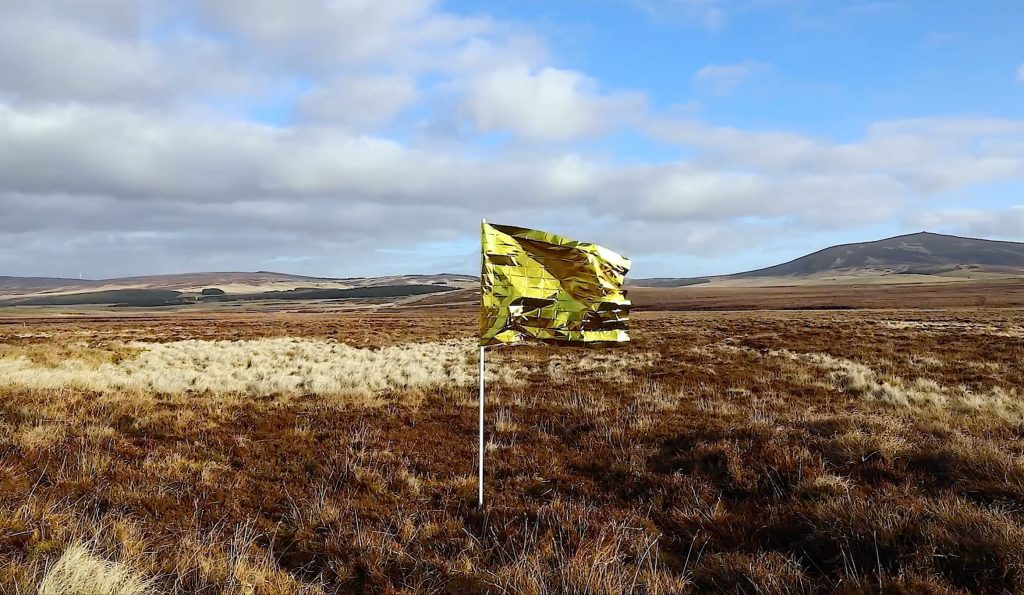
with THE DREAMERS
artwork by IMAN TAJIK
Minneapolis’s newest culinary whiz kid gathered a smattering of critics to appraise his talents on March 9, 2020. We knew, in the back of our minds, that our brethren in New York, Boston, and Philadelphia were heading into lockdown, but the Midwest of the US can feel wildly insulated … until one day it hosts a revolution.
For those of us brave and/or dumb enough at that moment to crowd around a table while sharing plates of food, we steadied ourselves by focusing on the task at hand: eating whatever was put in front of us, with an ultimate purpose of conveying not so much whether Chef’s craft was good or bad, but basking in its finer qualities instead, and conveying those to our readers.
What had been billed to us critics as a preview of the wunderkind-Chef’s new menu—similar to gratis events that usually entail showcasing a handful of items representative of a restaurant’s breadth—quickly escalated to an embarrassment of riches that felt a bit aggressive for eleven o’clock in the morning on a Tuesday.
They tried to bury us in food. First came a darling amuse-bouche, of course, followed by soups and finely julienne salads chased by fork-tender roasted root vegetables, and exquisite fried sweetbreads. … Chef came out to check on his subjects as whole Driftless trout (plural) were nestled onto the table, alongside a weeks-long dry-aged tomahawk steak that dwarfed everything before it. Then, just when we were at our most spent, they brought out a roasted pig’s head.
We were among the city’s few parties to experience the elite anarchy provoked by a server dropping an actual head on a platter, one very sharp knife, and leaving without providing guidance. Instructions were implicit: feed yourselves, and please don’t kill each other.
Placed squarely in the center of the table, it had been split down the meridian of its skull and roasted in flames we could see licking out of a hearth in the restaurant’s open kitchen. Its skin, glazed in a fennel agrodolce, surrounded by house-pickled mustard seeds and fermented cabbage, still sizzled. A spiced golden apple was shoved inside its toothy jaw to finish.
It stared up at us through a vacant eye socket as if posed in one final act of defiance. The only man at the table threw in his white linen napkin immediately, signaling defeat.
After the requisite photos were taken, the rest of us dug in. We dove into its cheeks first, snacking on its crackled skin. Most of the time we used utensils, but sometimes the task called for the nimbleness of bare hands. A colleague who knew to pry through the beast’s eye hole to expose its most succulent bits doled out tiny, equal, portions to everyone.
Bits of face in hand, I remember recoiling in horror for a split second and seeing our table anew, casually detached and framed below, as if being given a bird’s eye view of the wreckage. In recent months, I’d become burnt out on my beat. Decadent onslaughts of outrageous sustenance had ground me down.
Like a mantra, I reminded myself of the importance of staying in the moment, relocating myself within my body, even as my hands cleaved another being’s flesh from bone. Had I not stuck the landing on those mental gymnastics, the stakes were such that I felt like I wouldn’t have been able to consume anything—food with a face, or otherwise—ever again.
Hours later than expected—after plopping onto my desk a waxed paper box that strained to contain chunks of tender pig face previously attached to a once-thriving skull—I charged into my editor’s office, fully back in my body, just to rave like a pork-drunk lunatic: “They put a pig’s head on happy hour!”
And within a week, that world ground to a halt due to Covid-19. None of us ended up writing about that meal. Panic-stricken, I began covering where hungry, school-less kids could get free lunches. Before long, I’d begun referring to the “Food & Drink” section of our paper as “The Obits” due to laying to rest pandemic-closed restaurants daily. By late October, the paper I worked for would die, too.
That restaurant managed to hang on, through fits and starts. Initially they took a page from the unofficial Pandemic Pivot Playbook™ and made available for delivery the entire menu we critics had drowned in—including the pig’s head. For $59, they’d put it in a box and send it, via underpaid and underappreciated driver, to any doorstep of your choosing.
It was a short-lived window of opportunity, though: they entirely stopped service before April arrived, and took more than a year before the dining room fully reopened to guests.
On those early “lockdown” evenings, when the low hum of doom grew loud, the memory of that meal—notes of unbridled absurdity paired with giddy aggression—joined the ranks of other long-lost larks, laughing at me across spreads of lackluster home cooking efforts and soggy takeout containers.
Burnt-out and grieving a life that felt lost, my subconscious sprinkled my days with gut punches from a vibrant past, like a cruel little treat. Though I did my best to stay “neutral” for work and push away my feelings, I was increasingly afraid that simpler delights I’d taken for granted were disappearing right in front of me: drunkenly hoovering perfect campechano tacos with a bucket for a chair, or that I’d already had my final lesson on making my grandma’s best recipe—butter-laden rutabagas and dumplings with pork neck bones.
On casual strolls through my mind, I mostly ended up back at markets I’d loved, shopping my own memories. Flowers piled as high as pickup truck beds at Mercado Jamaica. Apple tea shared with a Turkish spice vendor. Bartering for tomatoes at the market by my apartment in Cameroon, as a young boy sneaked up behind me, shouted “Hey, la blanche!” and ducked behind the massive pig’s head in his arms right when I turned to face him.
Together we laughed—he at my look of surprise, me at his impishness—like we both won a ridiculous game.
These unbidden memories were tethered to a pervasive, superficial longing for exploration, and a time when doors of possibility were opening rather than slamming shut. But something darker was also roiling beneath it all. I should have been wondering whether that wunderkind-Chef’s greatest feat had been haunting me with a recognition of pig heads, near and far.
The Dreamers VI
When the pig’s head left its plate for good, transcending its role of culinary status symbol into that of proletariat tool, my stacked browser windows echoed livestreamed protests in response to Minneapolis Police murdering George Floyd, powered by a legacy of police brutality at home and nationwide.
While I struggled to find “food content” befitting a second day of flourishing demonstrations nestled within a pandemic, a crowd gathered outside the Third Precinct. A photojournalist for one of the local papers was on-hand to document the day’s peaceful protests as they gave way to destruction in the dark.
The city was tense and the afternoon light was flat and long. At dusk, silhouetted figures raged as stories-high flames licked the night, and the first of ultimately many establishments—big box chains, mom-and-pop joints, storied restaurants—were torched. Among the day’s most indelible images, and its hardest to digest, shows a Black man demonstrating with a severed pig head. The photographer captured his subject in shallow focus, rendering crisp only the man and partial animal.
The next nearest (human) mouth hangs agape mid-shout, and every arm except his own rises to hold a cell phone rather than an animal. His lean stomach is exposed and vulnerable, as is his full face. He holds the massive pig head high above his own, with a gaze fixed on state agents hiding just out of frame in their riot helmets, vests, and shields.
There’s no issue of sightlines, here. He spares no one his existence. That man, eye of the photo’s storm, stands sentry at its center.
Surging across phone screens and browsers, the image’s effectiveness lies in portraying one human’s visceral response to unlivable conditions, including a brutal legacy of Minneapolis Police perpetrating violence upon the Black community, amidst a society that necessitated the existence of the Black Lives Matter movement.
His message needed no words. We witness him clearly as social axes shift, emblematic of his decision to forgo protest signs and banners in favor of bringing a severed pig’s head to a cop shop.
The photo of his demonstration creates complicity among its viewers and the State. By offering up a symbolic mirror in the shape of a pig’s head, he slingshots back a fraction of the power, intimidation, and violence that centuries of white supremacy has weaponized against our Black neighbors.
Held high above his head for so long that one of the pig’s ears threatens to give way, the man’s protest commands space and becomes immortal in pixelated time. Blood drips from the beast’s eyes, too, though they glazed over long ago.
The next day, MPD abandoned the Third Precinct. In their absence the building was set ablaze.
The Man with the Pig Head was passed between awed colleagues. When family members living thousands of miles away checked in on me during The Uprising, I’d deflect answering about my personal mental state and send a link to the photojournalist’s slideshow with explicit instructions: keep going until you find the pig’s head photo. Responses included stunned silence, and a lot of holy shits.
I embraced the feeling that a relentless fog of pepper spray looming over the city, mixed with a preexisting pandemic-induced discomposure, had crystallized my attention in odd directions. Even as images of burning buildings were more sensational, this specific image became a touchstone for societal temperatures during the unrest.
Piles of pig heads for sale at my regular grocer weren’t helping matters, to be fair. Up until that point, knowing where to get a pig’s head (at a moment’s notice, no third-party delivery service necessary) was info I vaguely figured might come in handy at some point. … Then the greater conditions surrounding the meat went rogue.
One of the more disturbing parts about my brain orienting itself by severed head was recognizing that talking to friends and family about the matter would only make people worry—and worrying that their concern would be for you, not what was happening in the world we live in.
On the first day of 2021, still shiny with possibility, House Speaker Nancy Pelosi was greeted by a decapitated pig head in her home’s driveway, courtesy of constituents upset that the government hadn’t paid a bill due to us. A blood-red paint pool haloed the head, and a litany of demands referencing Congress’s failure to deliver $2000 per-American stimulus checks were scrawled on her garage door.
One read, “We want everything.”
In April of 2021, after Derek Chauvin was found guilty of murdering George Floyd by a court of our peers, three California women were charged with felony vandalism after attempting to leave a decapitated pig’s head and “OINK OINK” signs at the home of an expert who testified in defense of the convicted officer. But they hadn’t done their research: the witness no longer lived there, so a random family got blood smeared on their porch, and a head where their daily paper should go.
Almost exactly one month later, members of the Omaha-based Revolutionary Action Party threw a pig roast in response to “hateful acts” of the Omaha Police Officers Association, including but not limited to allegations that local elections had been tainted by “Southern strategy”-wielding law enforcement. That same night, three pigs’ heads materialized outside the city’s police union hall, resulting in the arrest of seven individuals.
My grocer offers up pig heads for barbecues, too. They are shelved at eye-level in a glowing cooler, bagged and tagged, adjacent to ribs, pork belly, honeycomb tripe, and trotters. They just hang out—a protein void of symbolic meaning.
For years I’ve glanced at them to keep an eye on the local price of pork. Over time, they’ve let me assemble a shitty, sidewalk economist’s version of a livability index—$15 per head in the mid twenty-teens, with prices holding steady at $16 from 2017 to 2021, and a $4 increase as of March 2022. So I knew that during happy hour in 2020, Chef’s restaurant would have turned a pretty profit on the dish. Less so every day, thanks to inflation and Covid-19 ravaging workers at meatpacking plants. Happy hours are harder to come by, too …
Only in 2020 did I start finding it odd that I’d never shared the checkout line with anyone buying a pig’s head.
Though ears and skin can be prepared in myriad ways, there’s a whole lot of flesh left to contend with for cooks only buying a head for its bits. Brawn became unfashionable long ago, so that’s out too. Folks in my neighborhood also don’t head to not-a-butcher with the intention to cure their own guanciale, so right about the time Daunte Wright was shot dead by Kim Potter and a demonstrator turned up outside Brooklyn Center’s police headquarters toting a pig head on a pole (a little police hat placed between the dead animal’s ears), I finally asked a familiar clerk about their average pig head-buying customer.
People with big families take them home because, “It’s a lot of meat for cheap,” she said. More often the meat from a pig head is simply slow cooked until it falls off the bone, the clerk suggested, though she’d never bought one for herself.
“It’s too much,” she said.
Demand isn’t borne out of a single style of preparation or signature dish. Culinary showstoppers have lost their resonance in a world reshaped by fire and plague. No single preparation or dish drives demand at the store. Heat, pressure, and time turns the flesh tender, often finding a home in soups.
“Soup for my family,” whispered that guy. And together we laughed, like everyone might just come out ahead.
THE DREAMERS
The Dreamers (2020), set in a rural Scottish landscape referencing the historic Highland Clearances, explores the notion of the border and questions the value and role of nationality in a time of emergency. The Dreamers series was made during Tajik’s residency at Deveron Arts, Huntly, as part of Tajik’s Bordered Miles project, which was a day-long group walk from the center of Glasgow to Dungavel House Immigration Removal Centre, approximately twenty-six miles south of the city in June 2021. The flag was raised outside the Dungavel detention center. An extension of Iman Tajik’s ongoing interest in making work for the public realm, the walk invites participants, both physically and virtually, to pay close attention to immigration detention centers, and the movement of bodies as a natural right of any species.
– Iman Tajik

SARAH BRUMBLE writer
Sarah Brumble is a Minneapolis-based freelance writer, editor, and photographer. Her work has appeared in Belt Magazine, Atlas Obscura, Massive Science, Pioneer Works, and Playboy. She was City Pages‘ final Food Editor.
IMAN TAJIK artist
Iman Tajik is an Iranian artist based in Glasgow, Scotland. His work is anchored in a strong social interest and demonstrates an effort to make work that is a critical tool connected to international movements for social change. Tajik’s work addresses issues of contemporary conditions of life with a particular focus on migration and globalization—thereby bridging the gap between art and activism, to create work as a form of socio-political currency, addressing power structures.
He works through different media such as lens-based, sculpture, installations, and performance; through these mediums, he “performs the border.” This inspires by personal experiences of crossing geographical borders and socio-political barriers to insist on the right to freedom of movement. Tajik spotlights and stresses the need for resistance toward barriers and boundaries that are implemented socially and politically in favor of some but not all. A contribution towards bridging the divide between self and other is paramount toTajik’s practice.
© Copyright for all texts published in Stillpoint Magazine are held by the authors thereof, and for all visual artworks by the visual artists thereof, effective from the year of publication. Stillpoint Magazine holds copyright to all additional images, branding, design and supplementary texts across stillpointmag.org as well as in additional social media profiles, digital platforms and print materials. All rights reserved.




